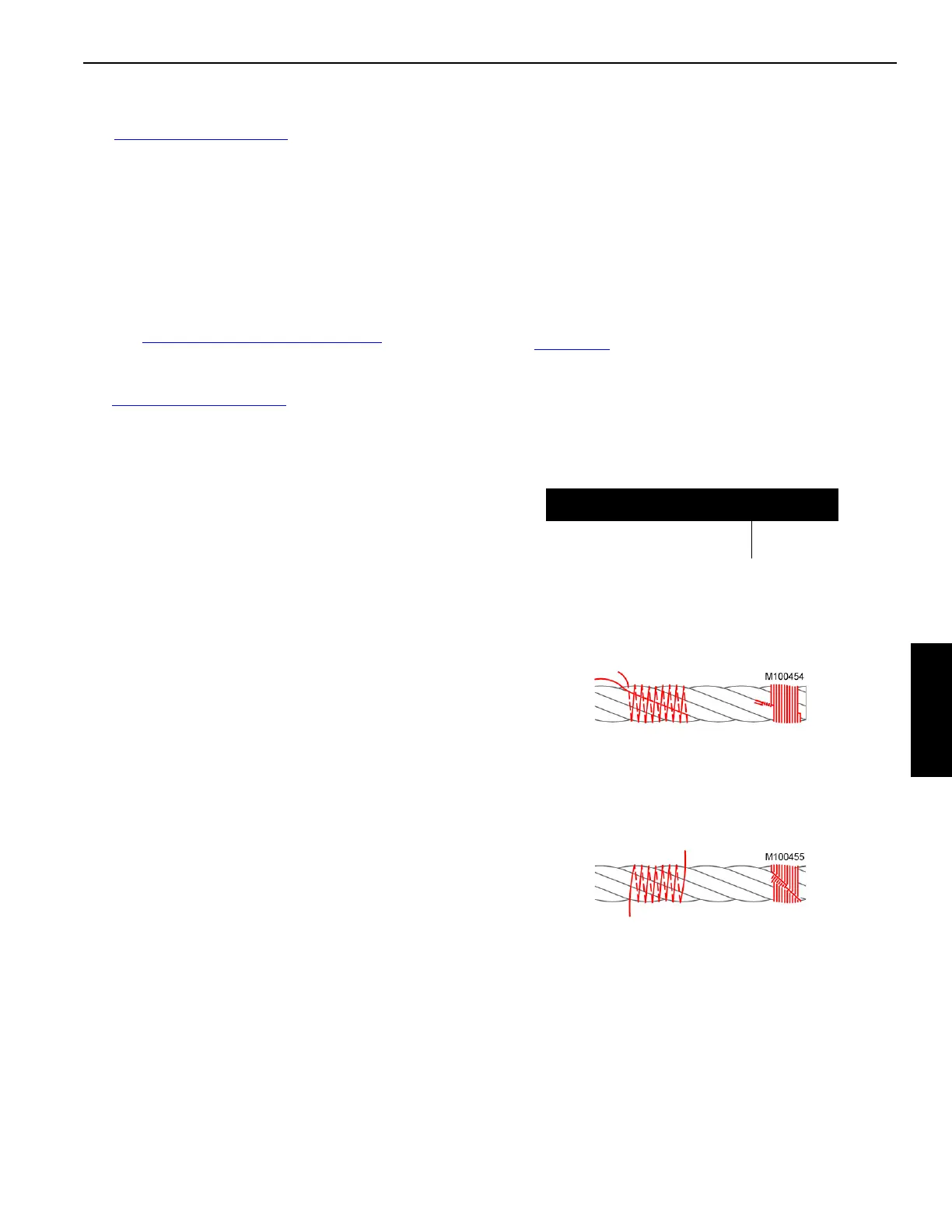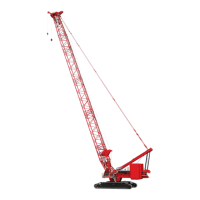Manitowoc Published 08-06-19, Control # 237-09_v2 4-117
MLC165-1 OPERATOR MANUAL SETUP AND INSTALLATION
Remove Jib Pendants
See Figure 4-83 on page 4-110 for the following procedure.
1. Disconnect the pendants (7) from the jib strut (1) and
from the jib top.
2. Disassemble and remove all jib pendants from the jib.
3. Coil the pendants for shipping.
Disassemble the Jib
1. Reverse the assembly steps to disassemble the jib
sections.
2. See Handling Jib Sections on page 4-107
.
3. The jib top, the jib butt, the strut, the spreader, and the jib
stop can be shipped as an assembled unit as shown in
Figure 4-78 on page 4-107
.
WIRE ROPE INSTALLATION
NOTE The wire rope manufacturer’s recommendations
take precedence over the following information.
Wire Rope Specifications
See the Wire Rope Specifications document in the Capacity
Chart Manual for the correct type, size, and amount of wire
rope to be installed on the crane.
The Wire Rope Specifications document contains the
following information:
• Parts of the line required for various loads
• Wire rope lengths and notes about hoisting distance for
various parts of the line
• Maximum spooling capacity of the load drums
Wire Rope Storage
Store the wire rope in coils or on reels off the ground or floor
in a clean and dry indoor location. If outdoor storage is
necessary, the wire rope must be covered with a protective
wrapper.
Keep the wire rope away from acids, fumes, and other
corrosives. Keep the wire rope away from heat that can dry
out the lubricant.
If the storage period will be long, lubricate the wire rope and
perform periodic inspection given in the Service Manual at
least monthly.
Seizing and Cutting Wire Rope
NOTE The wire rope manufacturer’s recommendations
takes precedence over this information.
Apply tight seizings of annealed wire to the ends of all wire
rope. If not done, the rope wires and strands may slacken.
This will result in overloading of some strands and under-
loading of others. Bird-caging and breakage of the wire rope
can occur.
Before cutting the wire rope, apply seizings on both sides of
the point where the cut will be made. Then cut the wire rope
with a torch, rope cutter, or abrasive cut-off wheel.
See Figure 4-90
for:
• The number of seizings to be applied to the ends of the
wire rope and to both sides of the point where a cut will
be made.
• The proper application method. Each seizing must be
one rope diameter long.
Figure 4-90
Wire Rope Type
Seizings
Required
Preformed 1
Non-Preformed 3
View A—Rope Diameter 1 in (25,4 mm) and Larger:
Place the free end of the seizing wire in the valley between two
stands. Then wind the seizing wire over the free end as
shown. Finally, twist and pull the two ends of seizing wire
together until the seizing is tight.
View B—Rope Diameter Smaller than 1 in (25,4 mm):
Wind the seizing wire around the wire rope as shown. Then
twist the two ends of seizing wire together at the center of the
seizing. Alternately twist and pull the ends until the seizing is
tight.

